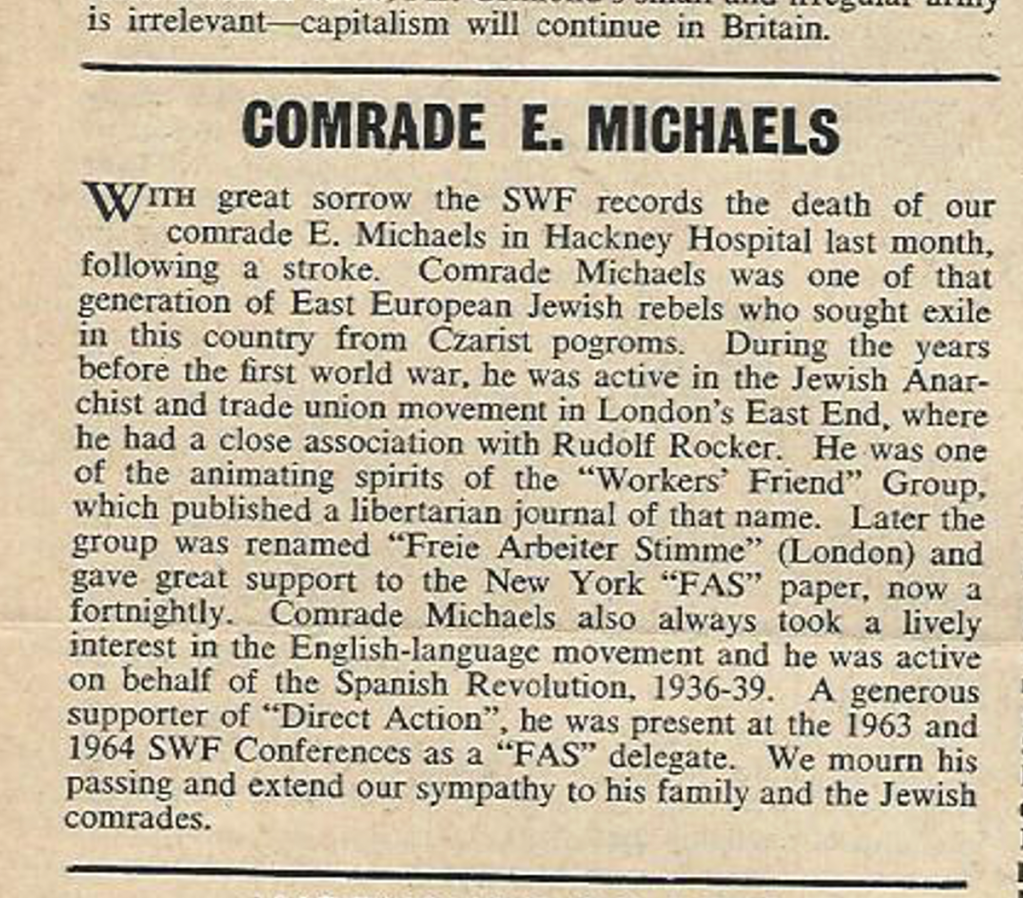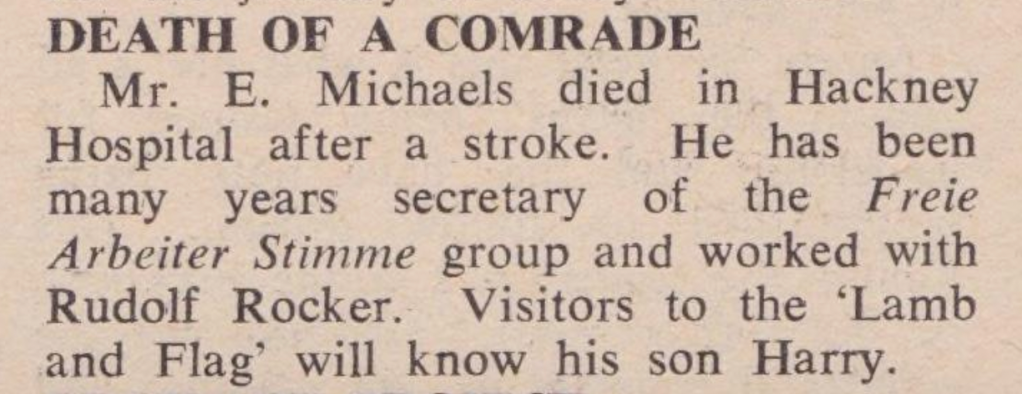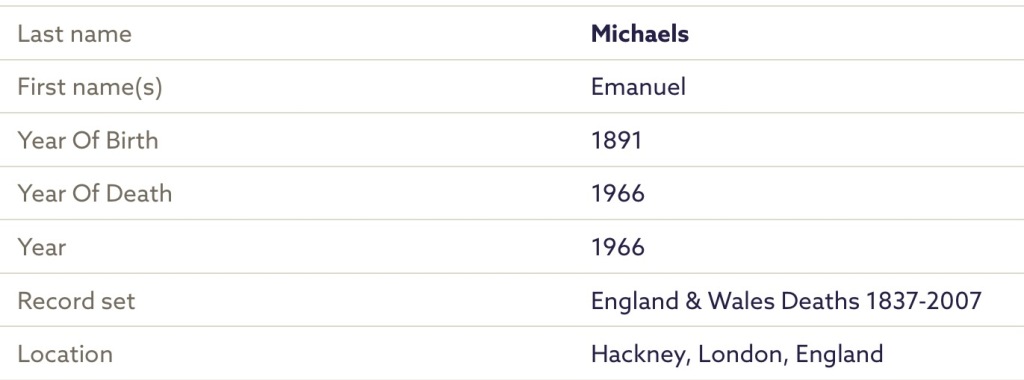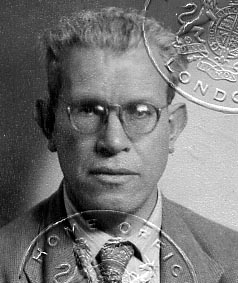
Sid Easton (1911-1991) was a Jewish cabbie, communist and trade unionist. The following is taken from his autobiographical tribute “The Life and Times of Sid Easton” edited by Graham Stevenson. This is available here (text) and here (pdf scan) and also includes a lot of material on the Transport and General Workers Union attempting to clamp down on communists in its Dalston branch.
At this time [1941] l had an unpleasant tangle with the law, it was an event heavily tinged with anti-Semitism. I had a job carting finished dresses in my cab. I waited whilst they loaded up and then I took them where I was directed. I carried string and I used to put it in one side through an open window and take it out through the other side and tie it to the roof.
Then they would pile dresses on hangers from the string inside the cab. So much so that the guy who sat in the back of the cab was completely invisible to anyone who didn’t know he was in there.
On this job one day, I was going down Dalston Lane, a viciously anti-semitic area. Nowadays it is viciously racist against Bangla Deshis. The traffic lights were just turning red as I got to them, so I pulled up. I wasn’t conscious of cutting anyone up. l was in such a good mood, once I’d finished this job I was going home to have an early finish. All of a sudden, I got the feeling that someone was trying to come over to my nearside, but couldn”t do so as the kerb was in the way. I looked to see what was happening, when someone came over.
“I’ve a good mind to punch you in the fucking jaw for cutting me up,” he told me. I looked at him, “Look, mate ,” I replied. “I wasn’t aware that I cut anybody up. If I did, I’m sorry. But be careful how you go, don’t threaten me, because I’ve got a weak heart,” I checked him. “I’ll give you a weak heart,” he said and swung a punch at me. I opened the big half door of the cab and swung it out as he shaped up. He was forced to step back and so didn’t get anywhere near me. I thought I’d let him see how big I was, because I’ve a tendency when I’m driving to slump down a bit! So, I got out of the cab and said,”Now look, you’ve had two goes.Why don’t you get back into your cab..” (he was actually driving a lorry ) “..and when the lights change we’ll go. I’ve told you, I didn’t intend to cut you up. Whatever I did was done quite unconsciously. I’m sorry, but what else do you want? Blood?”
“You fucking Jew bastard,” he growled and slung one at me. He was a mug, because I could see it coming a million miles away. So I just stopped it and hit him myself. He hit the deck – he fell flat on his face. There he laid. It was unfortunate for me, because immediately I hit him, my arms were grabbed by two men. They turned out to be plain clothed policemen. They stood waiting for the lorry driver to get up, but l’d done too good a job on him and he remained unconscious. Leaving him on the floor they took me to the police station, riding the few yards on the side runners of the cab. My passenger was still in the back and all this time was hidden by the hanging dresses. Well, I didn’t say anything about him!
These policemen knew what they were about alright, they didn’t care that I was defending myself… it was Jew versus Gentile. In the charge room they prepared to do me for grievous bodily harm. One of them says, ”It’s a good job this wasn’t at night, because we’d have done you.” Meaning of course that they would have beat me up under cover of darkness. “Look, I’ll tell you something,” I replied. “If this had been at night the pair of you would have been on the floor and out. But I’ll let you away with it. If you feel like it, I’ll prove it to you.”
By this time a superior officer arrived and began questioning me. He sent the two policemen who had arrested me out for the body. The knocked out lorry driver had come round before the police could get back to the scene of the crime, although they did have a note of the number of the lorry. The driver nonetheless had pushed off without knowing what had happened. Whilst the passenger in my cab emerged from his hiding place and arrived at the station to confirm that I had been a victim not an assailant.
So they were unable to make the GBH charge stick and resorted to charging me only with assault.
As I was leaving the station, the two policemen who had arrested me started whistling “Deutschland Uber Alles” – remember this was 1941! I asked the policeman in charge if he knew what they were whistling and told him that they also had reckoned they would have beaten me up in the backyard if it had been night-time. I told him that they could do that as far as I was concemed, and lock the door, for there was only going to be one person knocking on the door, the other two would only be fit for burying. He said, “You’re loosing your temper.”
I replied, “What do you mean, “loosing my temper” -there’s a war on, didn’t you know! They’re whistling the enemy’s song and you’re talking to me about loosing my temper. I thought this was something you could be in prison for.” Eventually I had to leave the station, my customer was still anxious to deliver his dresses!
In court, both me and the lorry driver were bound over to keep the peace and had to pay a two shillings fine. The policeman who took the money off us said that we had both acted stupidly and that we ought to shake hands, but the other guy refused although I told the policeman that I didn’t want to fight in the first place. So the copper said, “If I turned round the other way, do you want to give him another one!” That was funny, but I said it was too easy and in any case it was no use banging somebody you didn’t really have to be afraid of.

Further reading
- Several pieces on Jewish radicalism in Hackney and the fight against anti-semitism
- Communist Plan for Life in Hackney (1930s)
- Bob Darke’s critique of the Hackney Communist Party in the 1950s.
- “Hackney Needs Socialism” – a 1978 Hackney CP booklet
































